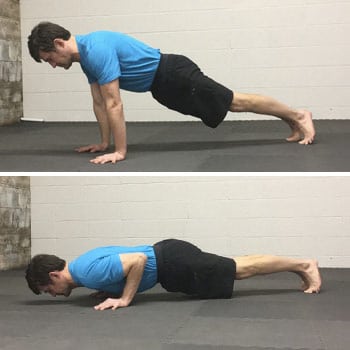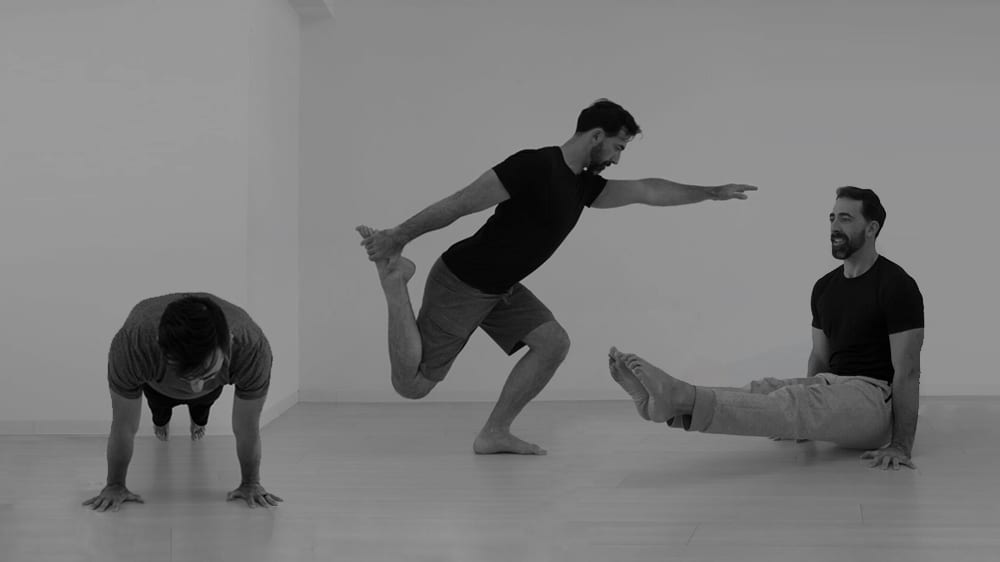In the oldest cave drawings known to man, hidden deep in the Amazon forest, archeologists have discovered depictions of primitive man doing push-ups.
 Okay, that’s fake news–the actual oldest known cave drawing is of some kind of ancient pig, proving that humans have been posting pictures of their food since the dawn of time. But bodyweight exercise is definitely the oldest form of exercise, and for good reason.
Okay, that’s fake news–the actual oldest known cave drawing is of some kind of ancient pig, proving that humans have been posting pictures of their food since the dawn of time. But bodyweight exercise is definitely the oldest form of exercise, and for good reason.
If you don’t have weights or fancy machines, you always have your body, so you always have a way to train.
Bodyweight exercise, or calisthenics, has had a resurgence in popularity in the past decade or so, but there are many approaches, hundreds (if not thousands) of possible exercises and variations, and a lot of confusing information out there.
In this guide, we’ll provide a clear path to bodyweight training for everyone from the total newbie to the seasoned athlete. Ready to dive in?
Benefits of Bodyweight Exercise Training
Training with weights can be very beneficial for a lot of different goals, and most of us at GMB use weights as part of our training, depending on what we’re focusing on in a particular training cycle.
So, this guide is certainly not meant to laud bodyweight exercise as the “ideal” model for training.
But bodyweight training does have certain benefits that might make it a good option for you. Even in conjunction with weight training, there are a lot of good reasons to incorporate bodyweight exercise into your routine.

This benefit is definitely the most obvious–when your body is your “gym,” training becomes a whole lot more convenient than getting in the car, driving 20 minutes, finding parking, going into the gym, waiting for the squat rack to free up, setting the weights to the appropriate level, changing out the weights between sets, etc. You know the drill. Bodyweight exercise can be done anywhere, anytime, so it removes a huge barrier to training.

When you’re working with weights (particularly with barbells), there are certain limitations on the ranges of motion you can use. A straight bar can only be moved around a joint in so many ways. With bodyweight training, there’s a lot more adaptability at your disposal. The ranges of motion available are literally endless, so you have many more options for adjusting your focus, modifying exercises around injuries or other limitations, and improving your capabilities across a much wider window of possibilities.

This is probably our favorite benefit of bodyweight exercise, the ability to work on the most important physical attributes–strength, flexibility, and body control–at once. With weight training, you’re typically only working on just one attribute–strength. And that’s okay. But what we’re after is physical autonomy, the confidence in knowing that your body is ready to handle whatever life throws at it. Strength alone won’t get you there. What will is strength combined with flexibility and overall body control. Bodyweight training makes that well-rounded approach possible.

If you’re a total beginner, you may not be thinking about high level skills–yet. But with a skill-based approach to bodyweight exercise, you’ll see relatively quick improvements toward skills you probably never thought possible. Smaller skills add up to bigger skills, and you can start setting some pretty lofty goals. Maybe a muscle-up isn’t on your radar, and maybe it never will be. But learning to control your body across different planes opens up the possibility to work toward skills like that in the future, if you want to. And that’s pretty cool.
One client of ours, Josh Hillis, had been training with weights for years before a wrist injury led him to bodyweight training (and all the benefits we just listed). Check out his story:









